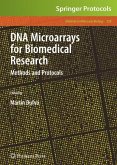In recent years, single nucleotide polymorphisms have received increased and special attention in a rapidly developing field of personalized medicine and drug treatment. Comprising more than eighty percent of all known polymorphisms, single nucleotide polymorphisms (SNPs) are primarily responsible for phenotypic differences between individuals, and have been suggested to affect the development of diseases in humans and the response to drug treatment and environmental stress. In Single Nucleotide Polymorphisms: Methods and Protocols, Second Edition, expert researchers explore the latest advances in this area, highlighting the substantial progress that has been made in SNP genotyping, examining recent developments in high-throughput genotyping approaches, and exploring our new understanding of the impact of SNPs on gene function. Chapters address the impact of SNPs on phenotype, examine SNP databases, look at methods that have been applied for SNP bioinformatics discovery and analysis, and discuss advanced experimental approaches used for SNP detection. Composed in the highly successful Methods in Molecular Biology(TM) series format, each chapter contains a brief introduction, step-by-step methods, a list of necessary materials, and a Notes section which shares tips on troubleshooting and avoiding known pitfalls.
Current and innovative, Single Nucleotide Polymorphisms: Methods and Protocols, Second Edition is an essential guidebook for individual researchers as well as institutions and companies working in the field.
Current and innovative, Single Nucleotide Polymorphisms: Methods and Protocols, Second Edition is an essential guidebook for individual researchers as well as institutions and companies working in the field.
From the reviews of the second edition:
"This second edition brings 11 new chapters ... . Its target audience continues to be researchers and laboratory personnel. One helpful feature the book includes is a set of 'notes' at the end of each chapter ... to be very useful for readers choosing to utilize a technique for the first time. ... Overall, this book is a good addition to any laboratory setting actively working on complex human traits or interested in personalized medicine and drug treatments." (Alexandre R. Vieira, Birth Defects Research (Part A): Clinical and Molecular Teratology, Vol. 88 (12), 2010)
"This second edition brings 11 new chapters ... . Its target audience continues to be researchers and laboratory personnel. One helpful feature the book includes is a set of 'notes' at the end of each chapter ... to be very useful for readers choosing to utilize a technique for the first time. ... Overall, this book is a good addition to any laboratory setting actively working on complex human traits or interested in personalized medicine and drug treatments." (Alexandre R. Vieira, Birth Defects Research (Part A): Clinical and Molecular Teratology, Vol. 88 (12), 2010)








